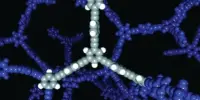Enzymes are proteins with a lot of catalytic activity. These are made by almost all living things. Natural enzymes, on the other hand, are not the same as the enzymes utilized in the fermentation process. Enzymes aid in the speeding up of biological events in humans, plants, and animals.
Enzymes are used in pharmaceutical, plastics, and other sectors to assist manufacture molecular feedstocks. Enzymes extracted directly from microbes such as bacteria are generally unsuitable for industrial usage; for example, they frequently do not survive the high temperatures required to speed up synthesis.
Enzymes can be tailored for these goals through genetic engineering. Understanding enzyme activity in nature requires knowledge of the exact atom-by-atom structure of the original enzyme, which provides insight into how to optimize enzyme genetic engineering.
Unfortunately, X-ray crystallography, which is a typical technique for defining an enzyme’s structure as a vital step in this process, can also change its structure.
Cryogenic electron microscopy (cryo-EM) can provide a level of structural information comparable to X-ray crystallography while preserving the original enzyme structure.
In fact, the use of this approach to determine the structure of biological molecules won the Nobel Prize in Chemistry in 2017.
Fermentation is a metabolic process that uses enzymes to induce chemical changes in organic substrates. It is described as the extraction of energy from carbohydrates in the absence of oxygen in biochemistry.
Industry will now be able to correlate the function of phosphoketolase with its correct structure. We expect that these insights will remind researchers that X-ray crystallography isn’t necessarily the final word on enzyme structure; cryo-EM can offer valuable insights.
Professor Kenji Iwasaki
Researchers from the University of Tsukuba and collaborators employed cryo-EM to identify the structure of the fermentation enzyme phosphoketolase, which was recently published in the Journal of Structural Biology. This work will make it easier to genetically engineer enzymes for industrial syntheses.
Fermentation is the most common way for bacteria to produce adenosine triphosphate (ATP) through anaerobic breakdown of organic materials. Fermentation has been utilized by humans to make meals and beverages since the Neolithic period.
“X-ray crystallography has revolutionized how researchers identify protein structures, but the development of alternative means that better reflect the structures seen in biology are invaluable,” explains senior author Professor Kenji Iwasaki.
“Our use of cryo-EM as an imaging tool has uncovered previously obscured structural detail in phosphoketolase that will directly benefit the chemical industry.”
The study’s findings are divided into two categories. To begin, eight phosphoketolase units form an octamer, which is a structure made up of eight phosphoketolase units. Second, they noticed characteristics of the QN-loop, a chain of amino acids that may determine whether the enzyme’s functional site is open or closed. This could be a way of increasing the enzyme’s chemical production.
Depending on the goal of the fermentation, different enzymes will be utilized. Starch is the primary ingredient in all alcoholic beverages.
The addition of malt to the fermentation process contains enzymes. The industrial enzymes employed in the fermentation process are only needed in modest amounts, whereas malt is needed in huge quantities.
The structural detail given by cryo-EM is obscured by X-ray crystallography. X-ray crystallography had previously detected the octamer, but it was assumed to be a measurement artifact. Furthermore, X-ray crystallography ignores structural features such as open/closed structures.
“Industry will now be able to correlate the function of phosphoketolase with its correct structure,” says Iwasaki. “We expect that these insights will remind researchers that X-ray crystallography isn’t necessarily the final word on enzyme structure; cryo-EM can offer valuable insights.”
The findings of this study are critical for improving the performance of a fermentation enzyme that is used in industry to undertake chemical syntheses.
Feedstocks for pharmaceuticals, polymers, and other materials can be manufactured in an environmentally sustainable manner by leveraging enzyme structural insights to maximize the efficacy of genetic engineering.
Funding:
This research was partially supported by Platform Project for Supporting Drug Discovery and Life Science Research (Basis for Supporting Innovative Drug Discovery and Life Science Research (BINDS)) from AMED under Grant Number JP 17am0101072 (to K.I. and N.M.).
















